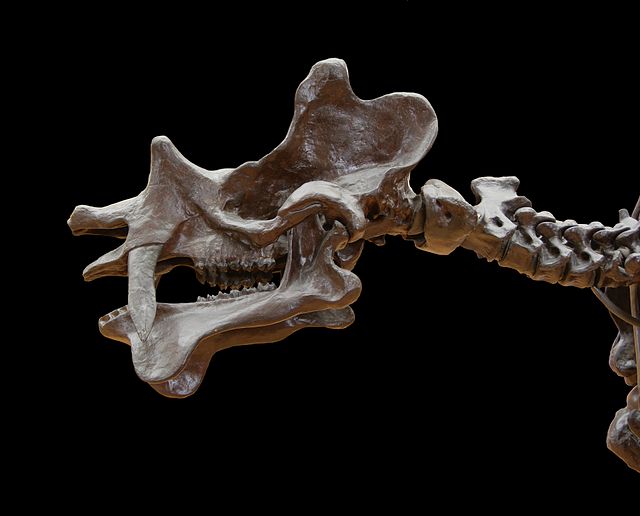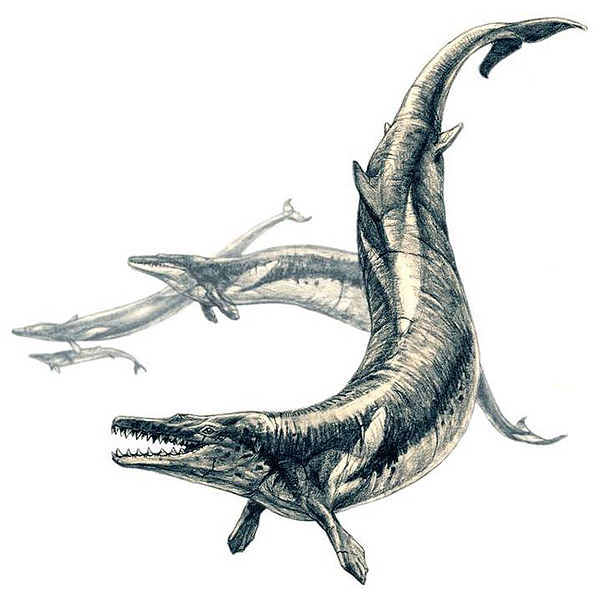The Eocene is a geological epoch that lasted from about 56 to 33.9 million years ago (Ma). It is the second epoch of the Paleogene Period in the modern Cenozoic Era. The name Eocene comes from the Ancient Greek ἠώς and καινός and refers to the "dawn" of modern ('new') fauna that appeared during the epoch.
Cast of Uintatherium anceps skull, French National Museum of Natural History, Paris
Reconstruction of Andrewsarchus, Dinosaurier Museum Altmühltal, Germany
Primobucco, an early relative of the roller
Moeritherium
The Cenozoic is Earth's current geological era, representing the last 66 million years of Earth's history. It is characterised by the dominance of mammals, birds, and angiosperms. It is the latest of three geological eras, preceded by the Mesozoic and Paleozoic. The Cenozoic started with the Cretaceous–Paleogene extinction event, when many species, including the non-avian dinosaurs, became extinct in an event attributed by most experts to the impact of a large asteroid or other celestial body, the Chicxulub impactor.
Rock deposits from the Cenozoic Era (Torre Sant'Andrea, Salento, Italy)
Basilosaurus
Megafauna of Pleistocene Europe (mammoths, cave lions, woolly rhino, reindeer, horses)







